Archive for July, 2022
» posted on Monday, July 11th, 2022 by Linda Lou Burton
Que Sera Sera
 Originally Published July 14, 2020 by Linda Lou Burton posting about Maui from Little Rock, Arkansas – Sunrise in Maui’s Haleakalā National Park occurred at 5:53 Hawaiian Standard Time this morning. My day was perfectly planned – 2 AM: wake up, dress, go to the lobby of Maui Seaside Hotel to wait for the tour bus. 2:40: hop on and ride to Skyline Tours headquarters for fresh Hawaiian coffee and a continental breakfast. Then ride the winding road (very winding at the last) to the summit of Mt Haleakalā, 52 miles from my hotel, over 9,000 feet above sea level. And it would still be dark.
Originally Published July 14, 2020 by Linda Lou Burton posting about Maui from Little Rock, Arkansas – Sunrise in Maui’s Haleakalā National Park occurred at 5:53 Hawaiian Standard Time this morning. My day was perfectly planned – 2 AM: wake up, dress, go to the lobby of Maui Seaside Hotel to wait for the tour bus. 2:40: hop on and ride to Skyline Tours headquarters for fresh Hawaiian coffee and a continental breakfast. Then ride the winding road (very winding at the last) to the summit of Mt Haleakalā, 52 miles from my hotel, over 9,000 feet above sea level. And it would still be dark.
 “View the Sunrise from the Top of the World” is the tour promotional. What better place to see the sunrise over Maui than from Haleakalā, Maui’s highest peak and a top visitor attraction. In a Skyline eco-adventure in the middle of wao akua, or “realm of the gods,” be there when Haleakalā National Park awakens with the rising sun near the summit of Haleakalā. Edge-of-the-world view in all directions while the early sunlight casts hues of natural light onto Haleakalā’s crater floor.
“View the Sunrise from the Top of the World” is the tour promotional. What better place to see the sunrise over Maui than from Haleakalā, Maui’s highest peak and a top visitor attraction. In a Skyline eco-adventure in the middle of wao akua, or “realm of the gods,” be there when Haleakalā National Park awakens with the rising sun near the summit of Haleakalā. Edge-of-the-world view in all directions while the early sunlight casts hues of natural light onto Haleakalā’s crater floor.
It’s been 31 years since I got my first hankering to “see the sunrise” there. I was in Maui with my parents (who were younger then than I am now). They simply had no interest; Mom had signed us up for an evening luau, so that was enough, they said. This year, I’d finally knock it off my bucket list. I booked on February 21, $176 paid in full. Ready and set. Haleakalā would be my 34th National Park out of the 62.
The Park, created in 1916, was designated an International Biosphere Reserve in 1980. The name Haleakalā is Hawaiian for “house of the sun.” The legend: the demigod Maui imprisoned the sun here in order to lengthen the day. The crater is an erosional valley 6.99 miles across, 2.0 miles wide, and 2,600 feet deep. The interior of the crater is dotted by numerous volcanic features, including large cinder cones.
 Haleakalā is one of the best places in the United States for amateur astronomy, due to its long scenic drive with numerous overlooks, and the unusually clear views of the night sky. Haleakalā Observatory, near the visitor center, lies above the tropical inversion layer so experiences excellent viewing conditions and clear skies.
Haleakalā is one of the best places in the United States for amateur astronomy, due to its long scenic drive with numerous overlooks, and the unusually clear views of the night sky. Haleakalā Observatory, near the visitor center, lies above the tropical inversion layer so experiences excellent viewing conditions and clear skies.
But back to the Tour. Of course we are ravenously hungry after starting a day at 2 AM, so on the way back down the mountain we stop at Kula Lodge, perched in a forest on the west slope of the Crater. The restaurant has floor to ceiling windows and a terrace, all with views of 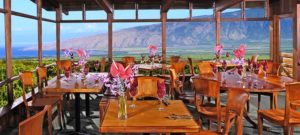 flower farms, mountains, and the Pacific Ocean. I’ll have the Haleakalā Mountain Meal with pancakes, or maybe the No Ka Oi” Omelet?
flower farms, mountains, and the Pacific Ocean. I’ll have the Haleakalā Mountain Meal with pancakes, or maybe the No Ka Oi” Omelet?
Yes, I’m tired now, but also pumped, with more great stuff ahead. Back to my hotel by noon; time to sit by the pool and gaze at the ocean before scooting to the Kahului airport, very close by. My 5:03 PM Flight to the next island, Hawaii, gets me to the Hilo (ITO) airport at 5:42 PM. I pile my luggage into my Budget car and drive 42miles to Hawaii Volcanoes National Park where I check into Volcano House. A room with a view – another crater, smoke rising over the rim of Mt Kilauea just out my picture window. (More about that tomorrow.)
But I seem to be sitting at my desk in Little Rock right now, with a heat advisory in effect that feels like 112 out there! What happened?
Aw, you know, reality. The National Parks closed back in March. Today’s online message: Park Closures, Alert 1 Severity. Some locations closed due to COVID-19. The NPS is working to increase access to the park in a phased approach. Limited Areas in the Summit District are open. All visitor centers, Crater trails and backcountry areas remain closed.
On June 12, I received the following email from Skyline Tours: Aloha, In response to the COVID-19 pandemic Skyline Hawai’i will be suspending all operations through July 31, 2020. If you currently have a reservation and would like to postpone or cancel your booking, please send us an email.
I canceled. The company kindly refunded my $176. Today, their site shows a possible next available opening of September 1.
I also canceled my two-night stay at Volcano House; they kindly refunded my deposit of $347.
The airlines is another story. On June 24, Hawaiian Airlines notified me that my 43-minute flight from Kahului to Hilo was changed; instead I’d go from Kahului to Honolulu (45 minutes), 1 hour layover, then Honolulu to Hilo (50 minutes) arriving at 7:30.
So it goes like this: I can’t get INTO the state without a 14-day quarantine, but Hawaiian Airlines changed my flight without considering that even if I GOT there, I wouldn’t be allowed out of my room. No refund offered.
Someday, as the saying goes, we may look back on this and laugh. But today, Que Sera, Sera is the best I can do.
» posted on Sunday, July 10th, 2022 by Linda Lou Burton
Where I’m Not
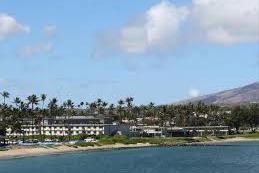 Originally Published July 13, 2020 by Linda Lou Burton posting about Seattle, Washington from Little Rock, Arkansas – I am NOT on Delta flight 978 for a 5-hour 53-minute flight departing Seattle (SEA) at 2:55 PDT this afternoon, and arriving in Kahului, Hawaii (OGG) at 5:48 PM HST. I will NOT be sleeping at the Maui Seaside Hotel at 100 W Kaahumanu Avenue in Kahului tonight. And I will NOT be getting up at 2 AM in the morning for a Haleakala Sunrise Tour.
Originally Published July 13, 2020 by Linda Lou Burton posting about Seattle, Washington from Little Rock, Arkansas – I am NOT on Delta flight 978 for a 5-hour 53-minute flight departing Seattle (SEA) at 2:55 PDT this afternoon, and arriving in Kahului, Hawaii (OGG) at 5:48 PM HST. I will NOT be sleeping at the Maui Seaside Hotel at 100 W Kaahumanu Avenue in Kahului tonight. And I will NOT be getting up at 2 AM in the morning for a Haleakala Sunrise Tour.
This was to be the second stop in my Round The World journey; the first stop on July 7 would have begun a week in the Seattle area visiting no less than a dozen family and friends. A visit 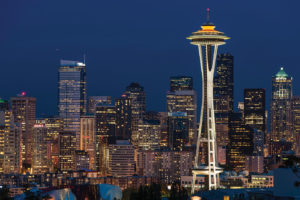 to the Space Needle was on the agenda, a ferry ride across the Sound, a play at the Taproot, and lots of Asian food. (Hard to come by in Arkansas.) Friend Carmelita planned to cook lumpia and other goodies for my entire family! I was planning to meet new “significant others” and to stand back to back with grandchildren for pictures confirming that yes, I’m the shortest member of the family now.
to the Space Needle was on the agenda, a ferry ride across the Sound, a play at the Taproot, and lots of Asian food. (Hard to come by in Arkansas.) Friend Carmelita planned to cook lumpia and other goodies for my entire family! I was planning to meet new “significant others” and to stand back to back with grandchildren for pictures confirming that yes, I’m the shortest member of the family now.
Seattle was my home for 25 of my 81 years. The University of Washington was the original draw; and then I stayed. And stayed. The Seattle that I moved to in 1980 has changed tremendously in 40 years. The house I bought for $80K in 1986 is now valued at over a million dollars, and it is just an ordinary house. The population of Seattle in 1980 was almost half a million, and though it was the largest city by far I’d ever lived in, it quickly felt like home. Today’s population is nearing 800,000 with more than 12,000 homeless, and that count was before COVID-19 struck this spring. The full metro area is approaching 4 million, so congestion now, and crowding.
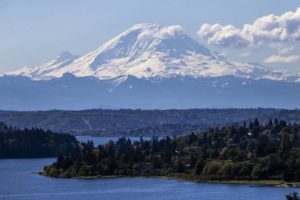 Still, Seattle scenery hasn’t changed. Puget Sound, surrounded by the Olympic Mountain Range on one side and the snow-covered Cascade Range on the other. Mt Rainer 100 miles to the south, the prettiest, most perfectly shaped mountain you will ever see.
Still, Seattle scenery hasn’t changed. Puget Sound, surrounded by the Olympic Mountain Range on one side and the snow-covered Cascade Range on the other. Mt Rainer 100 miles to the south, the prettiest, most perfectly shaped mountain you will ever see.
I’m glad I lived there. I loved the scenery, the people, the food, and the diversity. And especially, I loved the WEATHER! No bugs, no tornadoes, no thunderstorms and gully-washing rains. No it does NOT rain all the time in Seattle! Annual rainfall in Seattle is 37 inches. Annual rainfall in Little Rock, where I live today, is 50 inches. Put THAT on your rain gauge!
Gardening in Seattle was a joy. Since the area is temperate (did I mention, little snow and few winter days below freezing) things just grow and grow and grow. Rhododendron blooms year round, with every color you can imagine; the fir trees are tall, and gorgeous; it’s like God made several trips around that part of the world dispensing beautiful things.
My kids nearly bought out REI the first year we were there; we went camping at Frog Lake, a mystical spot at the foot of Mt Hood; snowshoeing at Hurricane Ridge out on the peninsula; picnicking beside mountain lakes in a meadow of purple lupine. Heaven! Three of my grandchildren were born while I lived in the Pacific Northwest, so sharing their first minutes of life was a supercalifragilistic experience. All good stuff.
It will be 11 PM in Little Rock tonight by the time that Delta flight would have landed in Kahului; midnight at least by the time I would have arrived at the Maui Seaside Hotel.
I won’t be there.
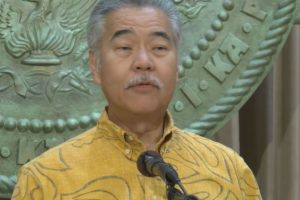 Governor David Ige announced today that the reopening of Hawaii’s tourism industry will be delayed until the end of August. Ige first implemented quarantine measures back in March, requiring any passenger on any flight landing in Hawaii to spend 14 days in isolation to prevent the spread of the coronavirus. As a result, the number of passenger arrivals statewide fell from an average of nearly 30,000 per day to fewer than 400 by the middle of April, according to data released by the Hawaii Tourism Authority. The governor has faced mounting pressure from several corners, including all four county mayors, to push back the planned reopening of tourism.
Governor David Ige announced today that the reopening of Hawaii’s tourism industry will be delayed until the end of August. Ige first implemented quarantine measures back in March, requiring any passenger on any flight landing in Hawaii to spend 14 days in isolation to prevent the spread of the coronavirus. As a result, the number of passenger arrivals statewide fell from an average of nearly 30,000 per day to fewer than 400 by the middle of April, according to data released by the Hawaii Tourism Authority. The governor has faced mounting pressure from several corners, including all four county mayors, to push back the planned reopening of tourism.
The governor did eliminate travel restrictions that pertained to inter-island travel last month, as the first step toward ushering in the return of the tourism sector in Hawaii. The second, the state hoped, was that in lieu of a 14-day quarantine, the state would require passengers to produce a negative coronavirus pre-test, taken within 72 hours of departure to Hawaii.
But as coronavirus cases on the mainland have surged in recent weeks, including in some of the markets that typically send the highest number of travelers to Hawaii, the state’s plan was criticized for being too weak to prevent a rash of new cases.
So I’m not in Hawaii tonight.
It should be noted, Hawaii has had only 1,115 total coronavirus cases and 19 deaths, the fewest of any state. This is mind boggling when you consider what is happening on the mainland. Good job, Governor Ige.
» posted on Saturday, July 9th, 2022 by Linda Lou Burton
The Way You Wear Your Hat
 Originally Published July 12, 2020 by Linda Lou Burton posting from Little Rock, Arkansas – Brooks Brothers bankrupt? It seems to be true. Demand for suits has plummeted with our newly enforced “work-from-home” lifestyle, though the trend was already in place. Comfort-in-the-workplace began taking priority in the high-tech industry several years back.
Originally Published July 12, 2020 by Linda Lou Burton posting from Little Rock, Arkansas – Brooks Brothers bankrupt? It seems to be true. Demand for suits has plummeted with our newly enforced “work-from-home” lifestyle, though the trend was already in place. Comfort-in-the-workplace began taking priority in the high-tech industry several years back.
And why not? Why do we wear the clothes that we wear in the first place? Back in 1975, John T Molloy came out with a book called Dress for Success. All about the effect clothing has on a person’s success in life, it gave birth to the concept of “power dressing.” “Never wear a brown suit,” Molloy advised, “it makes you look weak. Stick to grays and blues, dark.”
Dress codes were in place for years in most western countries, carefully spelled out in employee handbooks. Often this depended on the amount of interaction an employee had with customers, but not always. One of my sons began working for an insurance company in the 80s; on the phone all day and never in sight of anyone other than his co-workers. He was expected to wear a tie, and the tie could only be a certain color, and of a certain design. Dark pants, white or pastel shirts, and no tennis shoes, only leather, neatly polished. His son now works for that same company, and they have given up on dress codes. Certainly in the last few months, as he does his job from home, the modus operandi of millions since March.
How is enforced work from home affecting attitudes about the importance of what we wear, and how we look? Profoundly, it appears. Looking good “on the top” works for many – great earrings and a necklace that pops look snazzy and professional during on-line team meetings; the comfy pajama bottoms are never seen. The guys, it seems, are going for beards. One grandson, a software engineer with Amazon in Seattle, already sported a neatly trimmed dark beard; it fit well with the workplace culture there and fits equally well now for those team meetings from home.  Another grandson, a chemical engineer with Scripps in Florida, sent me his “new beard” picture today. “It came out red,” he said, “and it’s hot under my mask, but it makes me feel different.” Tee shirts and shorts make up the rest of the outfit; a lab coat overlay when he goes into the building to set up daily tests, masked up, with a little red around the edge. And the work gets done.
Another grandson, a chemical engineer with Scripps in Florida, sent me his “new beard” picture today. “It came out red,” he said, “and it’s hot under my mask, but it makes me feel different.” Tee shirts and shorts make up the rest of the outfit; a lab coat overlay when he goes into the building to set up daily tests, masked up, with a little red around the edge. And the work gets done.
People don’t NEED so many clothes now. With nowhere to go, there is no reason to change outfits so often. From school kids to the workforce, to the retired (like me), casual attire is fast becoming the norm because it is comfortable, less expensive, and easy to care for.
Cavemen wore funny-looking animal skins for warmth, we assume, but perhaps it was a hunter’s boast. Was that the beginning of “What I wear tells you who I am?” If you put a 15th-century king and a lowly peasant on “What’s My Line?” would the royal robes and rough-woven country attire give it away before they even spoke a word? Going with this notion, BRANDING became a big-time industry, as we were persuaded that we’d be more successful if we avoided wearing brown, as Molloy said; or more respected if we had the proper logo on our shirt. But even our pets can see through that pretense. “A dog can destroy a Jimmy Choo shoe just as fast as last year’s worn-out loafers,” a friend recently lamented.
Jobs lost and entire industries in trouble are a heartbreaking effect of the worldwide pandemic swirling around our heads. But perhaps a breather from “dressing up” will lead to a rethinking of priorities. For the industries – how can we use the resources we have to respond to what people actually need? For the people – that’s us – honest choices about what allows us to give the world the best we’ve got.
No matter what we wear.
» posted on Friday, July 8th, 2022 by Linda Lou Burton
What It Was, Was Football
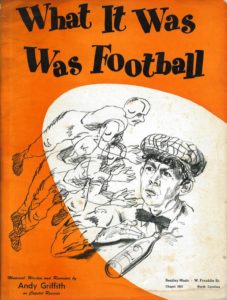 Originally Published July 11, 2020 by Linda Lou Burton posting from Little Rock, Arkansas – “What It Was, Was Football,” a monologue by Andy Griffith credited with launching his career, remains one of the biggest-selling comedy records of all time. And it IS funny. “Deacon Andy” thinks he is going to a tent revival when he stumbles into a college football game by accident. He doesn’t understand why they keep kicking a little pumpkin around. “And they was fightin’ each other for it!” he exclaims.
Originally Published July 11, 2020 by Linda Lou Burton posting from Little Rock, Arkansas – “What It Was, Was Football,” a monologue by Andy Griffith credited with launching his career, remains one of the biggest-selling comedy records of all time. And it IS funny. “Deacon Andy” thinks he is going to a tent revival when he stumbles into a college football game by accident. He doesn’t understand why they keep kicking a little pumpkin around. “And they was fightin’ each other for it!” he exclaims.
“Kicking the pumpkin” nowadays has soared far beyond sport, entertainment, or even tradition to become the biggest revenue producer for many a university. At the University of Texas, for example, 70% of its revenue from athletics comes from football.
Football funds NCAA sports and provides scholarships for college athletes. Football provides college athletes the opportunity to compete for a championship, and the fame and fortune that entails. Football helps to fund Association-wide legal services, communications, business insurance, and the list goes on.
Now it’s time for me to confess: I myself am not a football fan. My claim to fame is being at the University of Alabama the year Bear Bryant came to town. During his first year, I’d grab a hamburger after work and park the car by the fence to watch the magic on the practice field. I understand the love for the game. I understand that football is a force, a magnetic force pulling in a fan base whose loyalty is unexplainable. If you are born in Alabama, for instance, you are pledged at birth to be a lifelong Alabama or Auburn fan, and that loyalty is simply a way of life, even if you never set foot on a campus.
The ten most powerful fan bases in college football last year were, by one pick: Alabama, Michigan, Nebraska, Notre Dame, Ohio State, Oklahoma, Penn State, Tennessee, Texas A & M, Texas. From Roll Tide to Hook’em Horns, don’t get in their way when it’s game time.
If you’ve been keeping up with the impact of COVID-19 on sports, you are aware of some serious shakeups about to happen to fall college football schedules. The Power Five – the Atlantic Coast Conference (ACC), Big Ten Conference, Big 12 Conference, Pac-12 Conference, and Southeastern Conference (SEC) have made shattering announcements this week, with more to come, as football fans everywhere wait to hear the news.
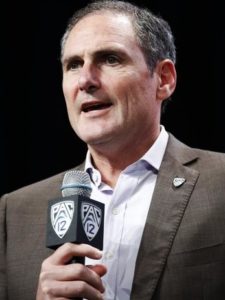 Yesterday it was announced that the Pac-12 Conference is canceling all its non-conference games for the season; just after that it was revealed that Larry Scott, Commissioner of the Pac-12 Conference, is battling COVID-19. Impact for the first game of the season: no USC vs Alabama on September 5. Financially for Alabama, that is a loss of $6 million.
Yesterday it was announced that the Pac-12 Conference is canceling all its non-conference games for the season; just after that it was revealed that Larry Scott, Commissioner of the Pac-12 Conference, is battling COVID-19. Impact for the first game of the season: no USC vs Alabama on September 5. Financially for Alabama, that is a loss of $6 million.
That’s just one example, for one school, on one football weekend.
The shoe had dropped the day before, as The Big Ten was first to announce a “conference only” schedule for this season; this impacts all sports, details are still in the making as conversations take place between the Big Ten Council of Presidents, Directors of Athletics, staff and medical experts. But Ohio State and Oregon, September 12, canceled for sure.
Two Conferences decided; three to go.
ACC Commissioner John Wofford: The health and safety of our student-athletes, coaches and administrators remains the ACC’s top priority…..The league membership and our medical advisory group will make every effort to be as prepared as possible during these unprecedented times, and we anticipate a decision by our Board of Directors in late July.
SEC Commissioner Greg Sankey: We are running out of time to make a decision. What do we have to do to get back to activity? The direct reality is not good…we owe it to each other to be as healthy as we can be.
Big 12 Conference Commissioner Bob Bowlsby: The ideal situation remains a full 12-game schedule that starts on Labor Day weekend.
The Power Five Conferences are not the whole of it. There are 10 conferences and 130 schools in the Football Bowl Subdivision, and I can’t count beyond that. The point is: “kicking a pumpkin” is part of the American scene. Yes, there is a great deal of money to be lost if COVID-19 knocks a hole in this season’s football schedules. But the sheer fun of the game for millions of fans is an even bigger loss.
What it WAS, was football – is that what fans will be left saying this fall on Saturday afternoons? That’s not funny.
» posted on Thursday, July 7th, 2022 by Linda Lou Burton
Gomer’s Phrase
Originally Published July 10, 2020 by Linda Lou Burton posting from Little Rock, Arkansas – It seems to me there are only two kinds of people in the world. It doesn’t matter about race or religion; doesn’t matter about one’s IQ or socioeconomic status, family background, or birth order. Nor does it matter about height, weight, age, gender, or sexual orientation as we consider which “kind” of person someone is. Ourselves included, of course.
 It’s simple. Psychologists might call it “outer-directed” or “inner-directed.” Or you can put it this way: Does a person rely on someone (or some thing) else for happiness; blame someone (or some thing) else for unhappiness; and wait for things to happen, either way? Do outside circumstances dictate whether a day is good or bad? Or does a person roll with the punches, adjust to the happenings of the world, and move ahead, regardless? “Life is like a box of chocolates,” Forrest Gump told us, in sweet and simple tones, “You never know what you’re going to get.”
It’s simple. Psychologists might call it “outer-directed” or “inner-directed.” Or you can put it this way: Does a person rely on someone (or some thing) else for happiness; blame someone (or some thing) else for unhappiness; and wait for things to happen, either way? Do outside circumstances dictate whether a day is good or bad? Or does a person roll with the punches, adjust to the happenings of the world, and move ahead, regardless? “Life is like a box of chocolates,” Forrest Gump told us, in sweet and simple tones, “You never know what you’re going to get.”
“Surprise, surprise, surprise,” was a phrase made popular by Gomer Pyle, as life in the little town of Mayberry filled our TV screens in the 1960s. Jim Nabors played the role of Gomer for 23 episodes on The Andy Griffith Show between 1962-64, but Gomer’s Phrase stayed around.
In the movie Forrest Gump which came out in 1994, Gomer’s Phrase can be heard on a TV in the background as Forrest (Tom Hanks) plays table tennis after being injured in the Vietnam war. And he’s really good at it, even after getting shot in the but-tocks!
Surprise, surprise, surprise. You never know what you’re going to get.
The “surprise” of COVID-19 has me reading, alphabetically, the entire booklist created by students at the Clinton School of Public Service, as I choose to remain quarantined at home. The authors of the last four books, from varying time periods, struck me with their wide swings of attitude to circumstances.
 Franz Kafka (1883-1924) was a German-speaking Bohemian novelist, and his writings are required readings in pretty much every college literature class. I first read Metamorphosis in college (where the lead character becomes a lowly bug), and now Letter to His Father, where a domineering father gets the blame for every anxiety and failure of his son’s life.
Franz Kafka (1883-1924) was a German-speaking Bohemian novelist, and his writings are required readings in pretty much every college literature class. I first read Metamorphosis in college (where the lead character becomes a lowly bug), and now Letter to His Father, where a domineering father gets the blame for every anxiety and failure of his son’s life.
 Keith Richards (1943- ) was co-creator of the Rolling Stones, born in England into a middle-class family. Keith loved music, got hooked on American blues in the 50s, dropped out of school to pursue his passion, and you know the rest. Fame, money problems, lawsuits, headlines, drugs. It was 2010 when he wrote Life, speaking frankly about the choices, and consequences, of the path he chose.
Keith Richards (1943- ) was co-creator of the Rolling Stones, born in England into a middle-class family. Keith loved music, got hooked on American blues in the 50s, dropped out of school to pursue his passion, and you know the rest. Fame, money problems, lawsuits, headlines, drugs. It was 2010 when he wrote Life, speaking frankly about the choices, and consequences, of the path he chose.
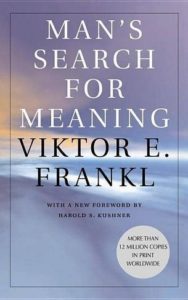 Viktor Frankl (1905-1997) was an Austrian psychiatrist, and a Holocaust survivor. His book Man’s Search for Meaning gives little detail on his suffering in Auschwitz and three other concentration camps, but rather on the sources of his strength to survive. He was kept alive, he tells us, by looking to the future, and thinking about what other things he was meant to do in life.
Viktor Frankl (1905-1997) was an Austrian psychiatrist, and a Holocaust survivor. His book Man’s Search for Meaning gives little detail on his suffering in Auschwitz and three other concentration camps, but rather on the sources of his strength to survive. He was kept alive, he tells us, by looking to the future, and thinking about what other things he was meant to do in life.
 Elie Wiesel (1928-2016) was a Romanian-born writer, professor, and Holocaust survivor. His book Night was based on his experience as a Jewish prisoner in both Auschwitz and Buchenwald concentration camps. He focused on the pain, fear, and suffering he endured. He tells us that at one time he cried out to God: Blessed be thy name? Why would I bless God? He created Auschwitz!
Elie Wiesel (1928-2016) was a Romanian-born writer, professor, and Holocaust survivor. His book Night was based on his experience as a Jewish prisoner in both Auschwitz and Buchenwald concentration camps. He focused on the pain, fear, and suffering he endured. He tells us that at one time he cried out to God: Blessed be thy name? Why would I bless God? He created Auschwitz!
See what I mean? How very odd, I’m thinking, that out of four books in a row, two authors focus on inward strengths; two look to the outside for blame. Kind of like what’s going on with “How To Solve The Problems Created by COVID-19 Around The World.” Every newscast or email I get is either focused on BLAME (Whose fault is this terrible thing?) or SOLUTION (How do we deal with this problem?).
Most, I’m sad to say, play the Blame Game. And then there is Head in the Sand. That’s the repetitive phrase, “Just wait. This will all be gone by next month.”
Surprise, surprise, surprise.
» posted on Wednesday, July 6th, 2022 by Linda Lou Burton
Moving On – College 2020
Originally Published July 9, 2020 by Linda Lou Burton posting from Little Rock, Arkansas –So we got our high-schoolers out, with patched-up on-line classes and pieced-together virtual graduations. Now, college?
Harvard University announced July 6 that it will only conduct online classes for the coming academic year, though it will allow some students to live on campus. Full tuition, however, is still in effect. California State University – the country’s largest four-year public university system, is also opting for online-only courses in the fall 2020 semester.
Most schools, however, 60%, are at this time planning for in-person classes, while others are considering a hybrid approach.
One of these is the University of Washington, where my granddaughter begins her freshman year, after a deflated ending to high school. Currently, the UW web page offers this information:
 Classes will begin as scheduled on Sept. 30, in a hybrid approach. We are offering as many in-person courses as possible, prioritizing hands-on courses, such as studio, clinical and lab courses, and courses for first-year undergraduate and graduate students. You can check the time schedule, which for most courses already indicates whether they will be taught in person or remotely. Schools and colleges will continue to update the schedule over the summer as they finalize their plans, so you can check back for additional updates as autumn quarter gets closer.
Classes will begin as scheduled on Sept. 30, in a hybrid approach. We are offering as many in-person courses as possible, prioritizing hands-on courses, such as studio, clinical and lab courses, and courses for first-year undergraduate and graduate students. You can check the time schedule, which for most courses already indicates whether they will be taught in person or remotely. Schools and colleges will continue to update the schedule over the summer as they finalize their plans, so you can check back for additional updates as autumn quarter gets closer.
“Going away to college” used to be a BIG DEAL – the first step in growing up and becoming independent. But “going away” is the biggest concern for a fall re-opening. A college campus with dorm living is compared to a nursing home in terms of “making sure everyone gets the virus” as students live in dorms, eat in dining halls, hop between classes, and party together.
My granddaughter fortunately lives within a few miles of campus, so will continue living at home. How many students in the country have that option? I checked the National Center for Education Statistics site again for some numbers about college attendance, as of LAST year. https://nces.ed.gov/fastfacts/
In fall 2019, about 19.9 million students were expected to attend college classes.
Of that:
- 12.1 million students full time, 7.8 million part time
- 16.9 million students in undergraduate programs, 3.0 million in grad school
- 14.7 million students in public institutions, 5.2 million in private
- 6.0 million students in 2-year institutions, 13.9 million students in 4-year
- 11.3 million female students, 8.6 million male
- 12.5 million students under age 25, 7.4 million 25 and over
Another question: how many degrees did colleges and universities expect to award at the end of the 2019-2020 school year?
- 989,000 associate’s degrees
- 1,975,000 bachelor’s degrees
- 820,000 master’s degrees
- 184,000 doctor’s degrees
 Did that happen? We won’t know till the final tally comes in. We do know that spring graduation ceremonies are still on hold for many schools. My personal connection is to the University of Florida through another granddaughter, who completed her requirements for a nursing degree in a flurry of uncertainty and online classes this spring. Clinicals, well, we won’t talk about that. She was privileged with a virtual Pinning Ceremony while still in Gainesville, and “cap and gown” photos were taken by a friend as she walked around campus. She was allowed to take her State Boards, and she has moved back home temporarily, and started her first job, working in a county that is a hotbed of COVID-19 cases, and overcrowded hospitals.
Did that happen? We won’t know till the final tally comes in. We do know that spring graduation ceremonies are still on hold for many schools. My personal connection is to the University of Florida through another granddaughter, who completed her requirements for a nursing degree in a flurry of uncertainty and online classes this spring. Clinicals, well, we won’t talk about that. She was privileged with a virtual Pinning Ceremony while still in Gainesville, and “cap and gown” photos were taken by a friend as she walked around campus. She was allowed to take her State Boards, and she has moved back home temporarily, and started her first job, working in a county that is a hotbed of COVID-19 cases, and overcrowded hospitals.
The May graduation ceremonies were moved to August, but most likely, with COVID-19 cases in Florida skyrocketing, those will be postponed once again. From the UF website:
 On Thursday, June 4, 2020 the State University System directed that Florida public universities plan alternatives to in-person commencement ceremonies due to continued COVID-19 health guidelines limiting gatherings. We regret the disappointment and inconvenience this will cause for graduates and their families who looked forward to attending the University of Florida’s rescheduled spring graduation weekend July 31-August 2. Rather than reschedule the spring ceremony weekend yet again only to face the possibility that it, too, will be canceled due to COVID-19, we want you to know two things. First we are committed to providing every graduate an opportunity to participate in a future in-person commencement ceremony once we are able to safely resume our regularly scheduled commencement ceremonies. Second, we will contact you once we are confident in-person ceremonies can resume. Whether it is December, May, or some other month, we look forward to welcoming you back, cheering for you and celebrating with you.
On Thursday, June 4, 2020 the State University System directed that Florida public universities plan alternatives to in-person commencement ceremonies due to continued COVID-19 health guidelines limiting gatherings. We regret the disappointment and inconvenience this will cause for graduates and their families who looked forward to attending the University of Florida’s rescheduled spring graduation weekend July 31-August 2. Rather than reschedule the spring ceremony weekend yet again only to face the possibility that it, too, will be canceled due to COVID-19, we want you to know two things. First we are committed to providing every graduate an opportunity to participate in a future in-person commencement ceremony once we are able to safely resume our regularly scheduled commencement ceremonies. Second, we will contact you once we are confident in-person ceremonies can resume. Whether it is December, May, or some other month, we look forward to welcoming you back, cheering for you and celebrating with you.
With a full-time job, away from campus, the draw of “going back to walk” is low. Students, most likely, have moved on.
Or tried.
Good luck to the millions of incoming hopefuls.
» posted on Tuesday, July 5th, 2022 by Linda Lou Burton
Readin’ and Writin’ and ‘Rithmatic
Originally Published July 8, 2020 by Linda Lou Burton posting from Little Rock, Arkansas – Do you know how many students attended public schools in the United States in the 2019-2020 school year? According to the National Center for Education Statistics, https://nces.ed.gov/fastfacts/, about 50.8 million – 35.5 million in prekindergarten to grade 8, and 15.3 million in grades 9-12.
 About 3.7 million students graduated from high school this spring, in the strangest ending to a school year anyone can recall. I’ve heard stories from my parents of “depression years” and school schedules revolving around “cotton-picking time.” My Dad was double-promoted in high school during hard times and wound up graduating at age 16. “Daddy had been a school teacher, and he made sure I got my studies done first. So I’d go to classes in the morning and then put in a crop in the afternoon,” he told.
About 3.7 million students graduated from high school this spring, in the strangest ending to a school year anyone can recall. I’ve heard stories from my parents of “depression years” and school schedules revolving around “cotton-picking time.” My Dad was double-promoted in high school during hard times and wound up graduating at age 16. “Daddy had been a school teacher, and he made sure I got my studies done first. So I’d go to classes in the morning and then put in a crop in the afternoon,” he told.  My Mom was dealt a reverse blow – her father held her back for two of her school years; once due to a lengthy illness and once when she simply needed to help support the family. My grandfather was a carpenter, and she dug clay from the riverbank to make bricks. But both parents persevered. They made it, despite the odds.
My Mom was dealt a reverse blow – her father held her back for two of her school years; once due to a lengthy illness and once when she simply needed to help support the family. My grandfather was a carpenter, and she dug clay from the riverbank to make bricks. But both parents persevered. They made it, despite the odds.
This year’s high schoolers were hit with an unexpected, unpredictable crisis along about March. In a flurry of fears and fumbles, as the COVID-19 virus began to creep across the country, schools shifted to stay-at-home, online classes. The methods varied from state to state, even within school districts. “Let’s stay home till this passes,” was Plan 1.
It didn’t pass. Virus cases continued to go up and state governors were tasked with issuing mandates to protect their citizens. What a thoroughly depressing “rock and a hard place” to be between. We can’t let 3.5 million kids miss a senior year! But also, we can’t let 50.8 million kids sit side by side in a classroom when the danger of illness, or death, is entirely possible.
So what to do?
You know what happened, it’s past now. My two high-school-senior-grandchildren toughed it out, sitting at home with their laptops; certain hours for online classtime and individual study. Yes, you can STUDY at home (that’s normally called “homework”) but how the heck do you complete a welding class online? They missed the senior prom, the cross-country meets, the camaraderie with school chums. It all went flat.
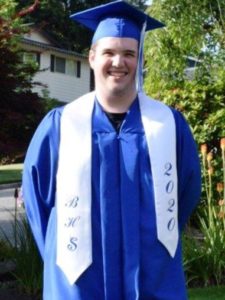 I applaud the effort their school officials made to create “virtual graduation ceremonies” so they did get to WEAR those caps and gowns; they did get photographed with smiling faces and feted with “immediate-family-at-home parties.”
I applaud the effort their school officials made to create “virtual graduation ceremonies” so they did get to WEAR those caps and gowns; they did get photographed with smiling faces and feted with “immediate-family-at-home parties.”  And cake, of course, cake. I’ve heard stories from friends in different parts of the country that told of similar, and some very unusual, solutions for “how to make it SPECIAL for the Class of 2020.”
And cake, of course, cake. I’ve heard stories from friends in different parts of the country that told of similar, and some very unusual, solutions for “how to make it SPECIAL for the Class of 2020.”
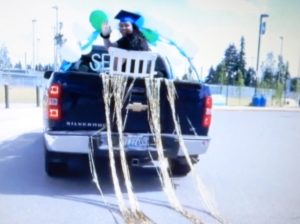 Life goes on, and the virus isn’t letting up as the fall “school year” fast approaches. The daily news is mostly daily arguments and accusations; we MUST do this; we CANNOT do that. The impact of school closures extends far beyond “educational concerns” or “health concerns.” Financial, emotional, practical, common-sense issues are topsy-turvy; our structured way of life is no longer certain of its footings.
Life goes on, and the virus isn’t letting up as the fall “school year” fast approaches. The daily news is mostly daily arguments and accusations; we MUST do this; we CANNOT do that. The impact of school closures extends far beyond “educational concerns” or “health concerns.” Financial, emotional, practical, common-sense issues are topsy-turvy; our structured way of life is no longer certain of its footings.
I analyze COVID-19 cases every day on the CDC site; today’s totals are 2,982,900 with 145,663 deaths so far in our 50 states, the District of Columbia, and our US territories.
Top Ten List
Sometimes, I noted, it isn’t good to make the TOP TEN LIST. Today, the ten US states dealing with the highest sheer numbers of COVID-19 cases are:
- 399,925: New York. Capital City Albany, Governor Andrew Cuomo, Democrat
- 277,724: California. Capital City Sacramento, Governor Gavin Newsom, Democrat
- 210,594: Florida. Capital City Tallahassee, Governor Ron DeSantis, Republican
- 210,585: Texas. Capital City Austin, Governor Greg Abbott, Republican
- 173,878: New Jersey. Capital City Trenton, Governor Phil Murphy, Democrat
- 149,574: Illinois. Capital City Springfield, Governor J B Pritzker, Democrat
- 110,338: Massachusetts. Capital City Boston, Governor Charlie Baker, Republican
- 105,094: Arizona. Capital City Phoenix, Governor Doug Ducey, Republican
- 100,470: Georgia. Capital City Atlanta, Governor Brian Kemp, Republican
- 92,148: Pennsylvania. Capital City Harrisburg, Governor Tom Wolf, Democrat
Andrew Cuomo, Gavin Newsom, Ron DeSantis, Greg Abbott, Phil Murphy, J B Pritzker, Charlie Baker, Doug Ducey, Brian Kemp, and Tom Wolf, governors of these hardest-hit states, have some tough decisions ahead. So do the governors, and health departments, and school boards, of ALL our states and territories.
There are more than 50 million children out there whose future rocks, and rolls, on the decisions you make.
Tomorrow: Colleges
» posted on Monday, July 4th, 2022 by Linda Lou Burton
Let Freedom Ring
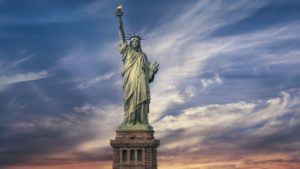 Originally published July 4, 2020 by Linda Lou Burton posting from Little Rock, Arkansas – Freedom is not the last word. Freedom is only part of the story and half of the truth. Freedom is but the negative aspect of the whole phenomenon whose positive aspect is responsibleness. In fact, freedom is in danger of degenerating into mere arbitrariness unless it is lived in terms of responsibleness. That is why I recommend that the Statue of Liberty on the East Coast be supplemented by a Statue of Responsibility on the West Coast. Viktor E Frankl, Man’s Search for Meaning, Beacon Press, Boston, Massachusetts, 2006, p 132.
Originally published July 4, 2020 by Linda Lou Burton posting from Little Rock, Arkansas – Freedom is not the last word. Freedom is only part of the story and half of the truth. Freedom is but the negative aspect of the whole phenomenon whose positive aspect is responsibleness. In fact, freedom is in danger of degenerating into mere arbitrariness unless it is lived in terms of responsibleness. That is why I recommend that the Statue of Liberty on the East Coast be supplemented by a Statue of Responsibility on the West Coast. Viktor E Frankl, Man’s Search for Meaning, Beacon Press, Boston, Massachusetts, 2006, p 132.
One of the tasks I have undertaken during this time of quarantine is to read all 80 books selected by students at the Clinton School of Public Service here in Little Rock for their annual “Recommended Reading Booklist.” Frankl’s Man’s Search for Meaning is #36 on that list (as I alphabetized it) and I just finished reading it this afternoon. His comment about the Statue of Liberty particularly caught my attention on this 4th of July, a holiday when we generally watch fabulous fireworks displays against the backdrop of our Lady of Liberty.
But not this year.
The Statue of Liberty National Monument and Ellis Island are temporarily closed in response to the COVID-19 virus outbreak. New York has remained at the top of the list of “highest percent of population diagnosed with the virus,” though Florida, Texas, California, and Arizona numbers have soared in the past week and the infection curve is rising in 40 states. What will actually happen tonight varies widely all across the country; social distancing guidelines have spurred sales of fireworks to individuals. Nearly half of U S states are taking new steps to limit the spread of the virus, with many making special rules to combat crowds over the holiday weekend.
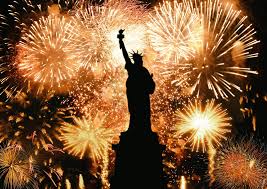 But back to New York. To allow New Yorkers to experience this year’s 4th of July Fireworks safely without creating crowds, Macy’s has reimagined their annual spectacle as a series of smaller unannounced displays in every borough of New York City. Each show is brief and will be over before residents can gather at its source. Stay close to home and follow safe social distancing guidelines is the message. This is one example of Responsibleness in action.
But back to New York. To allow New Yorkers to experience this year’s 4th of July Fireworks safely without creating crowds, Macy’s has reimagined their annual spectacle as a series of smaller unannounced displays in every borough of New York City. Each show is brief and will be over before residents can gather at its source. Stay close to home and follow safe social distancing guidelines is the message. This is one example of Responsibleness in action.
And back to Viktor Frankl, and his thoughts on the subject of being responsible. Broadly speaking, freedom is the ability to do as one pleases. But the responsible use of freedom does not deprive anyone else of their freedom.
 If the Statue of Liberty was open today, and you could go stand under her watchful eye, that’s what she would say, take my word for it. Meanwhile, tune in this evening for those Macy fireworks and see if you can catch a glimpse of the old gal, standing alone in the harbor in quarantine. Waiting for her partner to be erected out there on the other shore of our united states, the Statue of Responsibility.
If the Statue of Liberty was open today, and you could go stand under her watchful eye, that’s what she would say, take my word for it. Meanwhile, tune in this evening for those Macy fireworks and see if you can catch a glimpse of the old gal, standing alone in the harbor in quarantine. Waiting for her partner to be erected out there on the other shore of our united states, the Statue of Responsibility.
» posted on Sunday, July 3rd, 2022 by Linda Lou Burton
It’s Great To Be Eighty!
 Originally Published July 3, 2020 by Linda Lou Burton posting from Little Rock, Arkansas – I celebrated my 80th birthday in Lisbon last year. It was the beginning of a three-week tour of Portugal, Spain, and Morocco. A hurried, harried tour, to be sure, on the bus by 8 AM; never in the same place more than two nights. But the good thing was – we covered a heck of a lot of territory! Grandson Andrew joined me; he had just completed his last college class and had a month to spare before his new job began. What a hoot!
Originally Published July 3, 2020 by Linda Lou Burton posting from Little Rock, Arkansas – I celebrated my 80th birthday in Lisbon last year. It was the beginning of a three-week tour of Portugal, Spain, and Morocco. A hurried, harried tour, to be sure, on the bus by 8 AM; never in the same place more than two nights. But the good thing was – we covered a heck of a lot of territory! Grandson Andrew joined me; he had just completed his last college class and had a month to spare before his new job began. What a hoot! 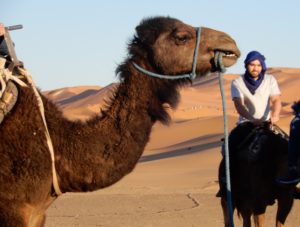 Camel rides in the Sahara, wading in the Mediterranean Sea, a stop at the westernmost point of the entire Euro-Asia land mass. Cathedrals and mosques; great art, history, scenery. The Tomb of Christopher Columbus. Todra Gorge. The Atlas Mountains. Olive trees. Oases. A ferry ride across the Strait of Gibraltar. A day IN Gibraltar, fish and chips and monkeys roaming free. I was delighted to tick off five world capital cities on the trip: Paris, Lisbon, Rabat, Madrid, and Amsterdam. A worthy beginning of my 80th decade.
Camel rides in the Sahara, wading in the Mediterranean Sea, a stop at the westernmost point of the entire Euro-Asia land mass. Cathedrals and mosques; great art, history, scenery. The Tomb of Christopher Columbus. Todra Gorge. The Atlas Mountains. Olive trees. Oases. A ferry ride across the Strait of Gibraltar. A day IN Gibraltar, fish and chips and monkeys roaming free. I was delighted to tick off five world capital cities on the trip: Paris, Lisbon, Rabat, Madrid, and Amsterdam. A worthy beginning of my 80th decade.
I proudly posted this proclamation on my refrigerator door, author is Ethel Peairs Brandon: Will you hear the good news from the horse’s mouth? The first eighty years are the hardest! The second eighty years, so far as my experience goes, are a succession of great parties. Everybody wants to carry your packages and help you up the stairs. If you forget your name or anybody else’s, or forget to fill an appointment, if you promise to be two or three places at the same time or spell words wrong, you need only to explain: You are past eighty.
It’s a great deal better than being sixty-five or seventy….At that time everyone expects you to retire to a little house in a warm climate and become a discontented, fumbling, limping has-been. But if you survive until you’re eighty, everybody is surprised you are still in the land of the living. They are amazed you can walk and astounded that you can be lucid. At seventy, people are mad at you for everything. At eighty, they forgive you for anything. Yes, if you ask me, life begins at eighty!
My 81st birthday this April took a different turn. On March 19 I received the following notice from the Department of State, where I had registered for travel alerts: The Department of State advises U.S. citizens to avoid all international travel due to the global impact of COVID-19. Many countries are experiencing COVID-19 outbreaks and implementing travel restrictions and mandatory quarantines, closing borders, and prohibiting non-citizens from entry with little advance notice. Airlines have cancelled many international flights and several cruise operators have suspended operations or cancelled trips.
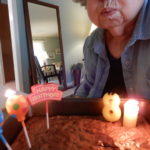 Here in Arkansas, by the end of March directives had closed schools, restricted public gatherings, and shut down most of the things I like to do in Little Rock – such as favorite restaurants, and events and lectures at the Clinton Center. I cooked myself a pan of brownies and celebrated my birthday at home. My azaleas were in full bloom, so that was a beautiful gift from Mother Nature.
Here in Arkansas, by the end of March directives had closed schools, restricted public gatherings, and shut down most of the things I like to do in Little Rock – such as favorite restaurants, and events and lectures at the Clinton Center. I cooked myself a pan of brownies and celebrated my birthday at home. My azaleas were in full bloom, so that was a beautiful gift from Mother Nature.
One of the saddest effects of a quarantined life are the impacts on the elderly, particularly those confined to nursing homes. I have more friends and family than I can count on both hands who are separated from those who love them and are living the last days of their life in isolation.
Yes, it is great to be eighty, as Ethel Brandon proclaimed. But it isn’t great to live in quarantine. Even the very latest directive issued here in Arkansas, as facilities are beginning to open again, states this: Signs must be posted at all entrances advising the public that they may wish to refrain from entering if they are 65 years of age or older. Or if they have underlying health conditions including high blood pressure, chronic lung disease, diabetes, severe obesity, asthma, or weakened immunity.
Us “older folk” lean to humor a lot; it helps alleviate the limitations. Cousin Dwight, the oldest surviving member of my family, is always sending me “old folks jokes” and I received this one in today’s email: To help save the economy, the Government will announce next month that the Immigration Department will start deporting seniors (instead of illegals) in order to lower Social Security and Medicare costs. A major study concluded that older people are easier to catch, offer less resistance, and—most importantly—will not remember how to get back home. Be sure to send this notice to your relatives and friends so they’ll know what happened to you! . . . I started to cry when I thought of you . . . then it dawned on me — I’ll see you on the bus! (author unknown)
It made me laugh, for sure. But seriously speaking – if you know ANYONE who is “home alone” put them on the top of your TO DO list for phone calls, cards, an offer to run errands, a tomato from your garden, anything to let them know they are NOT alone. You can do this if you are eight years old, or eighteen, or, well, even eighty! Maybe, especially if you are eighty, because you are a tried and true survivor.
And THAT is great!
» posted on Saturday, July 2nd, 2022 by Linda Lou Burton
Down to Your Last Nerve
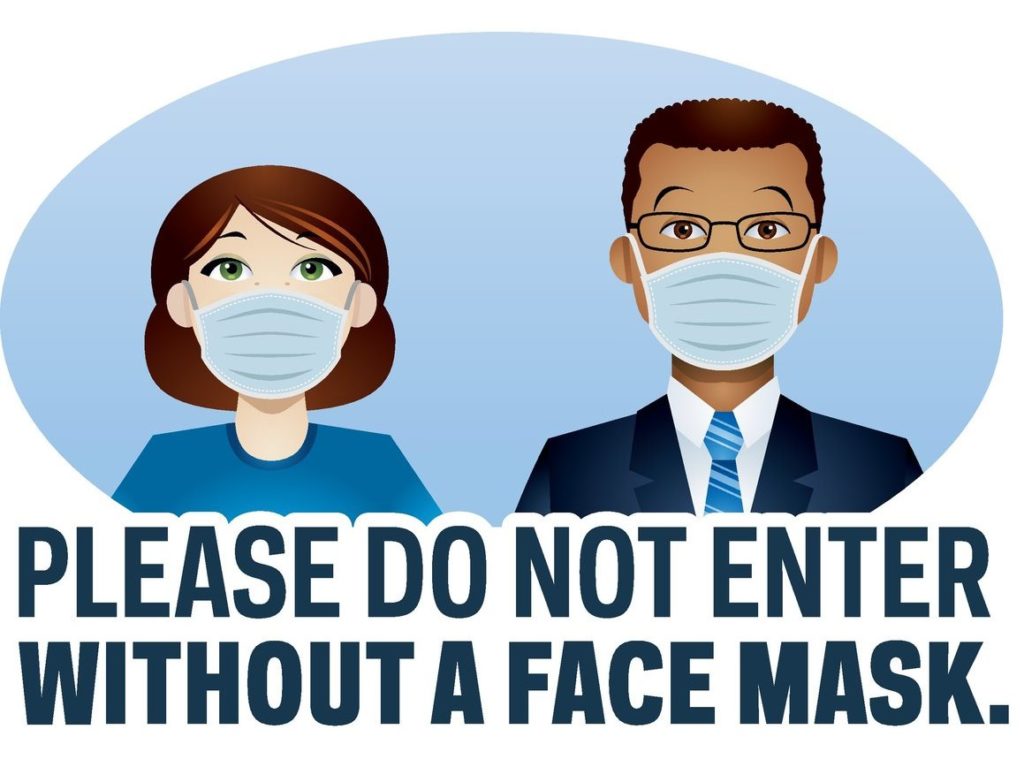 Originally published July 2, 2020 by Linda Lou Burton posting from Little Rock, Arkansas – The weather is hot and the political atmosphere is even hotter as the national holiday celebrating “American Independence” approaches. COVID-19 cases are going UP and not DOWN in many parts of the country, as people clamor for businesses to re-open and defiantly refuse to “mask up” in public places. Jennifer Anniston took to social media yesterday to state: “Just Wear The Damn Mask!”
Originally published July 2, 2020 by Linda Lou Burton posting from Little Rock, Arkansas – The weather is hot and the political atmosphere is even hotter as the national holiday celebrating “American Independence” approaches. COVID-19 cases are going UP and not DOWN in many parts of the country, as people clamor for businesses to re-open and defiantly refuse to “mask up” in public places. Jennifer Anniston took to social media yesterday to state: “Just Wear The Damn Mask!”
Chafing at the Bit describes a lot of feelings after four months of quarantine; a restricted way of life is wearing thin. As my dear friend Betty used to say when she just couldn’t take it anymore: I am down to my last nerve.
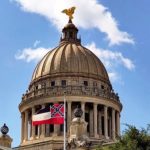 Politics are even hotter than the weather, raw nerves abound. Yesterday in Jackson the Mississippi state flag came down, permanently. A new design has been commissioned, and will be voted on by state residents in November. Mississippi was the last state to have a Confederate emblem on its flag.
Politics are even hotter than the weather, raw nerves abound. Yesterday in Jackson the Mississippi state flag came down, permanently. A new design has been commissioned, and will be voted on by state residents in November. Mississippi was the last state to have a Confederate emblem on its flag. In Richmond, Virginia’s state capital (which was once capital of the Confederacy), a statue of Confederate General Stonewall Jackson came down yesterday as a cheering crowd watched in the rain. In Seattle, CHOP camps (Capitol Hill Organized Protests) were cleared out yesterday after two weeks of standoffs and shootings that were part of the nation’s unrest after the police custody death of George Floyd in Minneapolis.
In Richmond, Virginia’s state capital (which was once capital of the Confederacy), a statue of Confederate General Stonewall Jackson came down yesterday as a cheering crowd watched in the rain. In Seattle, CHOP camps (Capitol Hill Organized Protests) were cleared out yesterday after two weeks of standoffs and shootings that were part of the nation’s unrest after the police custody death of George Floyd in Minneapolis.
Add to that – it’s an election year, and voters are questioning the mental and physical fitness of both our sitting president, and the expected Democratic nominee. Both guys are in their 70s, and both have been criticized for their rambling speeches, and frequent gaffes. “We’re not electing a president this year,” the chatter is, “we’re electing a vice president, that’s who will wind up running the country!”
So dear reader, if you feel that you are “down to your last nerve” about how things are going in 2020 in our “land of the free and home of the brave” let me remind you of something terrible and tumultuous that happened 139 years ago on this date in our nation’s capital.
On July 2, 1881, Charles J Guiteau shot and fatally wounded the newly inaugurated US President James A Garfield in the lobby of the Baltimore & Ohio Railroad Depot in Washington, DC as he yelled, “I am a stalwart and Arthur is now President of the United States!” Guiteau blamed the president for not selecting him for a job at the US Consulate in Paris.
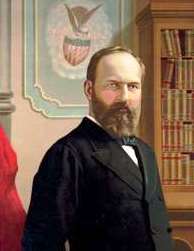 Mr Garfield’s presidency was cut so short there isn’t enough of a legacy to rank him among the worst and best – he was only in office four months. He was the last president to be born in a log cabin, and grew up poor and fatherless. He was bullied as a child, so took up wrestling. He was our only ambidextrous president, and a great multi-tasker. He was also one of the most well-read of our presidents and his background included being a soldier (he was a major general in the Civil War), a lawyer, a politician, and a math and science expert. Maybe his childhood toughened him up against bullying; as soon as he took office he pioneered the Pendleton Civil Service Reform Act, making it a law that all government jobs be granted on the basis of merit and merit alone.
Mr Garfield’s presidency was cut so short there isn’t enough of a legacy to rank him among the worst and best – he was only in office four months. He was the last president to be born in a log cabin, and grew up poor and fatherless. He was bullied as a child, so took up wrestling. He was our only ambidextrous president, and a great multi-tasker. He was also one of the most well-read of our presidents and his background included being a soldier (he was a major general in the Civil War), a lawyer, a politician, and a math and science expert. Maybe his childhood toughened him up against bullying; as soon as he took office he pioneered the Pendleton Civil Service Reform Act, making it a law that all government jobs be granted on the basis of merit and merit alone.
And then was killed by a man wanting a job. At least, that’s part of the story.
President Garfield did not die immediately, but lingered for eleven weeks, during which time surgeons repeatedly attempted to find the bullet that had lodged in his back. In spite of Joseph Lister’s discoveries regarding the use of antiseptics in surgery, the practice of sterilization had not caught on, and Garfield’s wound was probed by many unwashed fingers. The resulting infection, not the bullet, caused Garfield’s eventual death on September 19, 1881. Vice president Chester A Arthur became president of the United States on September 20.
Garfield’s incapacitation sparked a constitutional crisis, as the Cabinet was divided over whether the vice president should assume the office of the incapacitated president or merely act in his stead. It was not until 1967, with the passage of the Twenty-fifth Amendment to the Constitution, that the question of the succession of power was fully addressed. Today, the vice president assumes the office of president in the event that a sitting president is “unable to discharge the powers and duties of his office.”
In spite of Guiteau’s manifest insanity at his trial, his attorneys were unable to gain an acquittal on that basis—it was, however, one of the first uses of the modern insanity defense in a criminal court. After a six-month trial that sparked great public interest, Guiteau was found guilty and hanged on June 30, 1882.
Note: James Abram Garfield was our 20th president and was 50 years old when assassinated.
Reference: Library of Congress National Archives
Yes, things are definitely nerve-wracking right now. But July 2 was one heck of a bad day for Mr Garfield and Mr Guiteau, if you want to compare. My suggestions for tackling the heat if you have your own lemons to deal with:
- Make yourself a nice tall glass of lemonade.
- Cool down and mask up!

